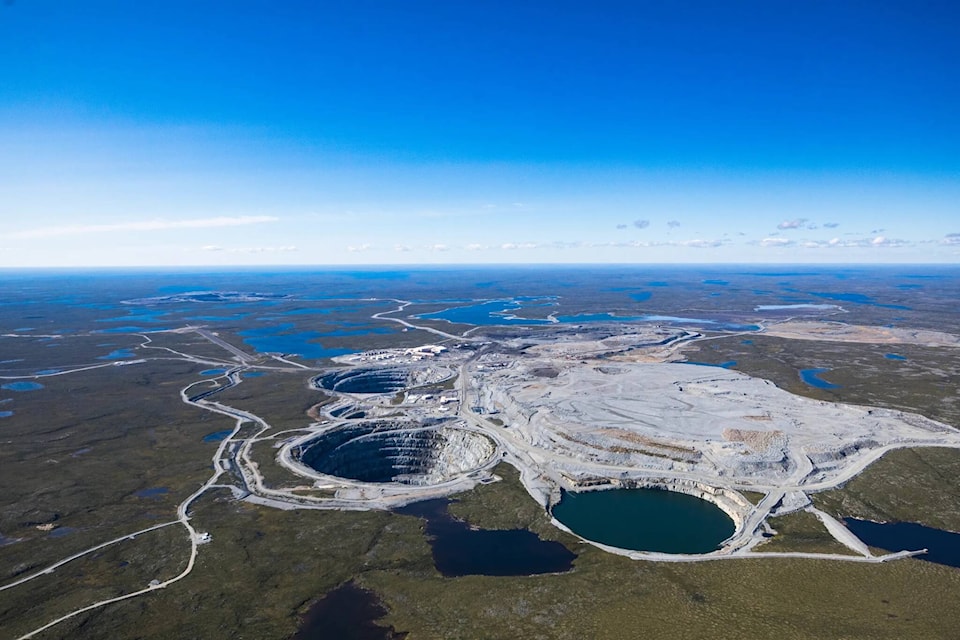The lifespan of the Ekati diamond mine could be extended another 25 years, and perhaps even further into the future, according to Burgundy Diamond Mines CEO Kim Truter.
“It’s been going for 25 years, and there’s probably still another 25 years to go,” Truter said from Vancouver Island, where he lives. “That’s our long-term goal.”
Ekati is situated near Lac de Gras, approximately 300 kilometers northeast of Yellowknife. It opened in 1998. Previous estimates suggested the mine would cease operations toward the end of this decade, and possibly sooner, but last July, Australian firm Burgundy purchased the property with the belief that it still has lots to give.
“We paid $136 million US for an asset that had probably $2 billion of assets infrastructure,” said Truter, who has also worked for the Diavik and Gahcho Kue diamond mines over the course of his decades-long career in the industry. “Then on top of that, there’s a diamond inventory, plus a pipeline of development projects.
“When you look at the resources on the ground – this is what we keep reminding people – Ekati has still got the third-largest diamond endowment on the planet. We look at it as a wonderful addition, and it’s become the cornerstone asset for Burgundy.”
It’s been just over six months since Burgundy bought Ekati, along with all other assets of former owner Arctic Diamond Company. “The ownership change has gone fantastically,” according to Truter, thanks in large part to a specialized integration team.
The smooth transition has strengthened the CEO’s opinion that Burgundy is the right company to extend the mine’s lifespan. The plan to do so is multifaceted and long-term in nature. The first phase, which Truter believes will extend the mine’s life until about 2037, hinges on the execution of five additional projects, including extended work at Ekati’s Misery, Sable and Fox sites, and the continued expansion of Point Lake, its newest open pit.
All five projects “need to happen,” according to Truter. He also noted that the timing of the projects is critical.
“Time is the most important thing,” he said. “We need to make sure that things don’t get slowed down by bureaucratic processes.
“Those projects that we are trying to develop, they need to be sequenced quite quickly. We can’t afford to lose any time. That worries me a bit.”
Truter also emphasized the importance of continuing to work with local Indigenous governments and communities, and hiring Northerners to run the mine, which already employs more than 1,000 people.
“A Northern workforce makes very good business sense,” he said. “One of the huge advantages of a Northern workforce is that they are not going anywhere, unlike southern workers, who will change jobs and have other opportunities come up somewhere else in Canada. Northerners don’t do that.
I’m always passionate about maximizing how many Northerners you have in the workforce because it’s a win-win situation. It’s good for the business and it’s good for the people in the North.”
Since Burgundy purchased Ekati last summer, Truter said he has spent some time getting “reacquainted” with the communities and people of the region, and that he has the impression residents are excited about the possibility of the mine extending its operations well into the future.
“We all seem to have a common goal, and the common goal is making sure the North is healthy and prosperous for many years to come,” he said.
